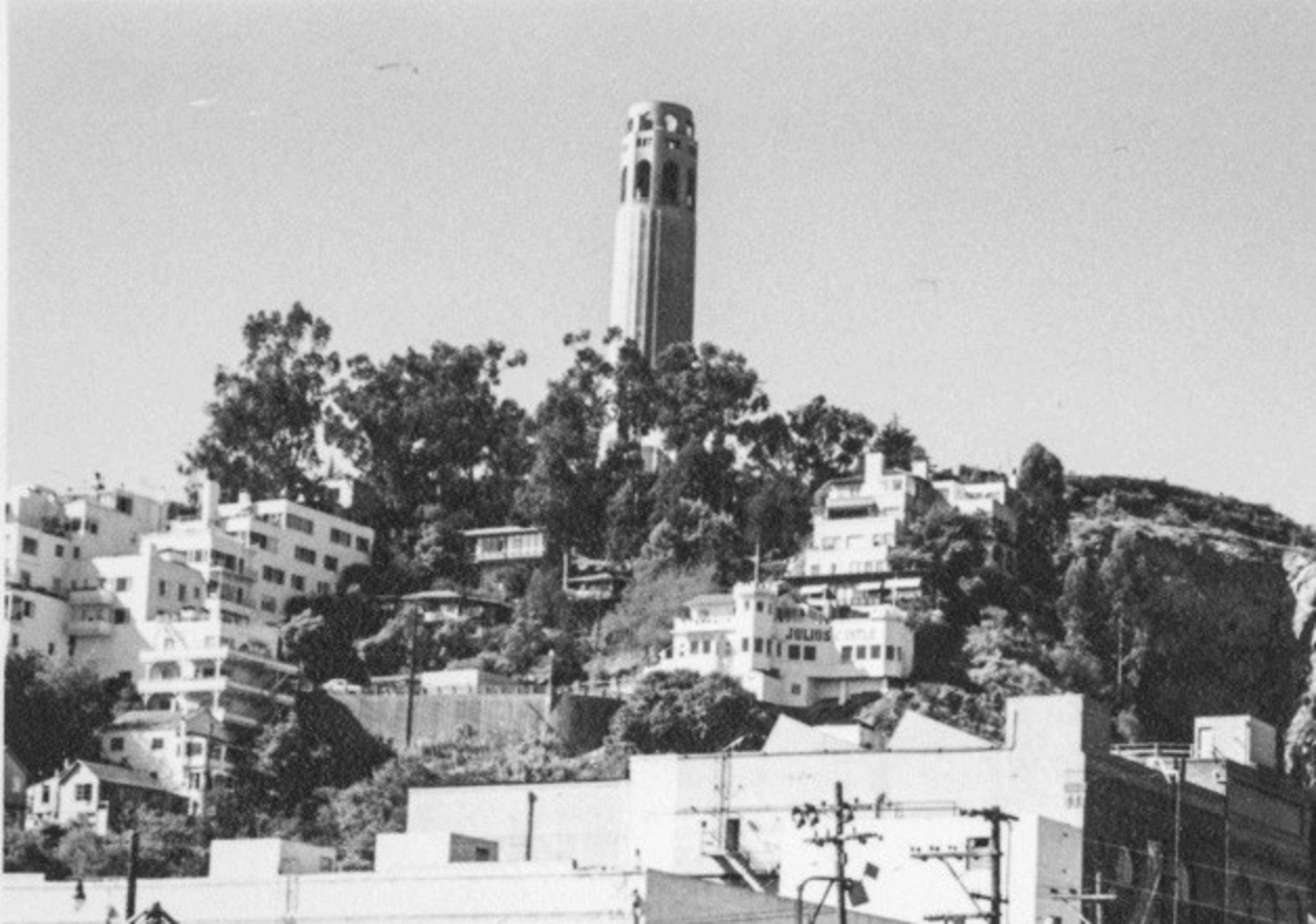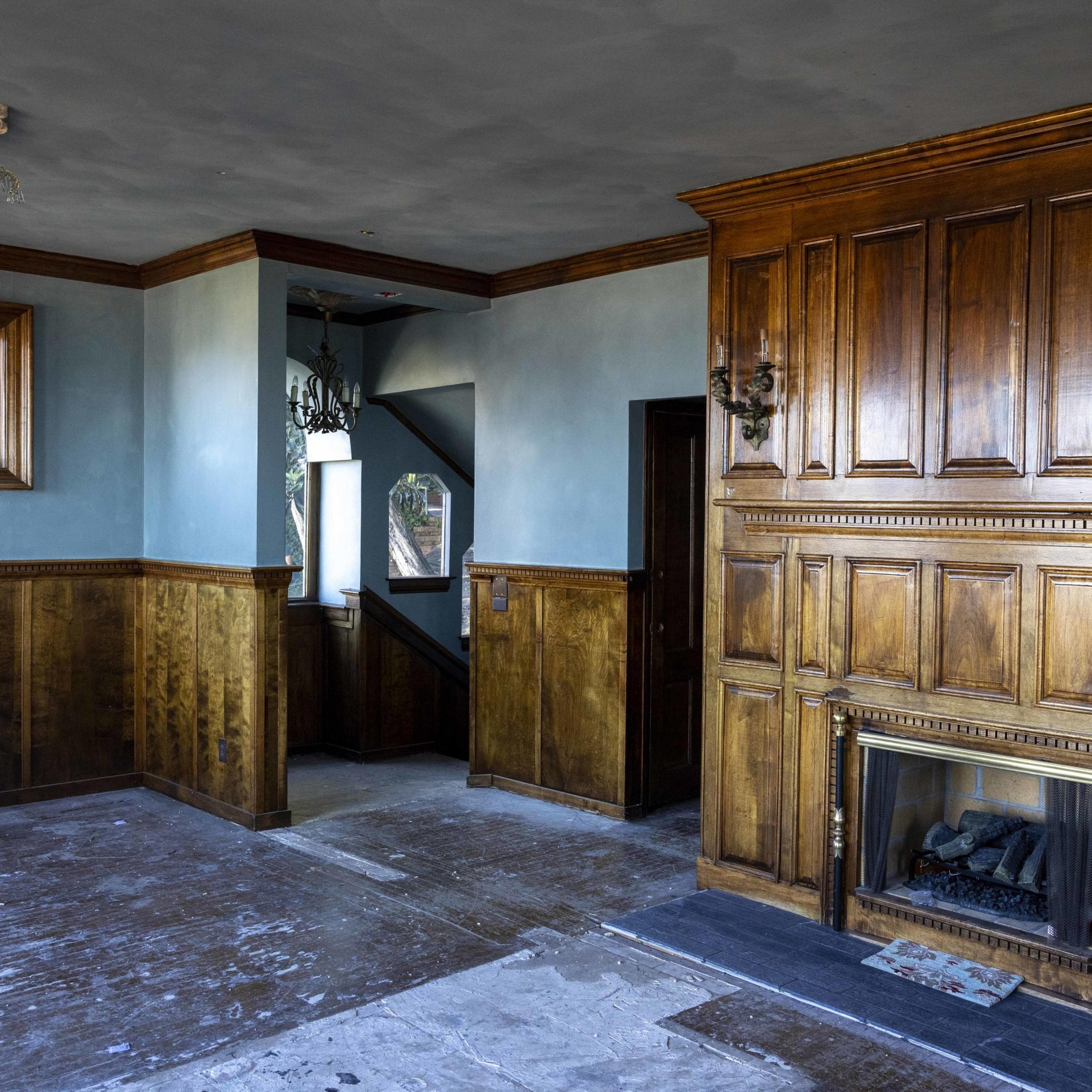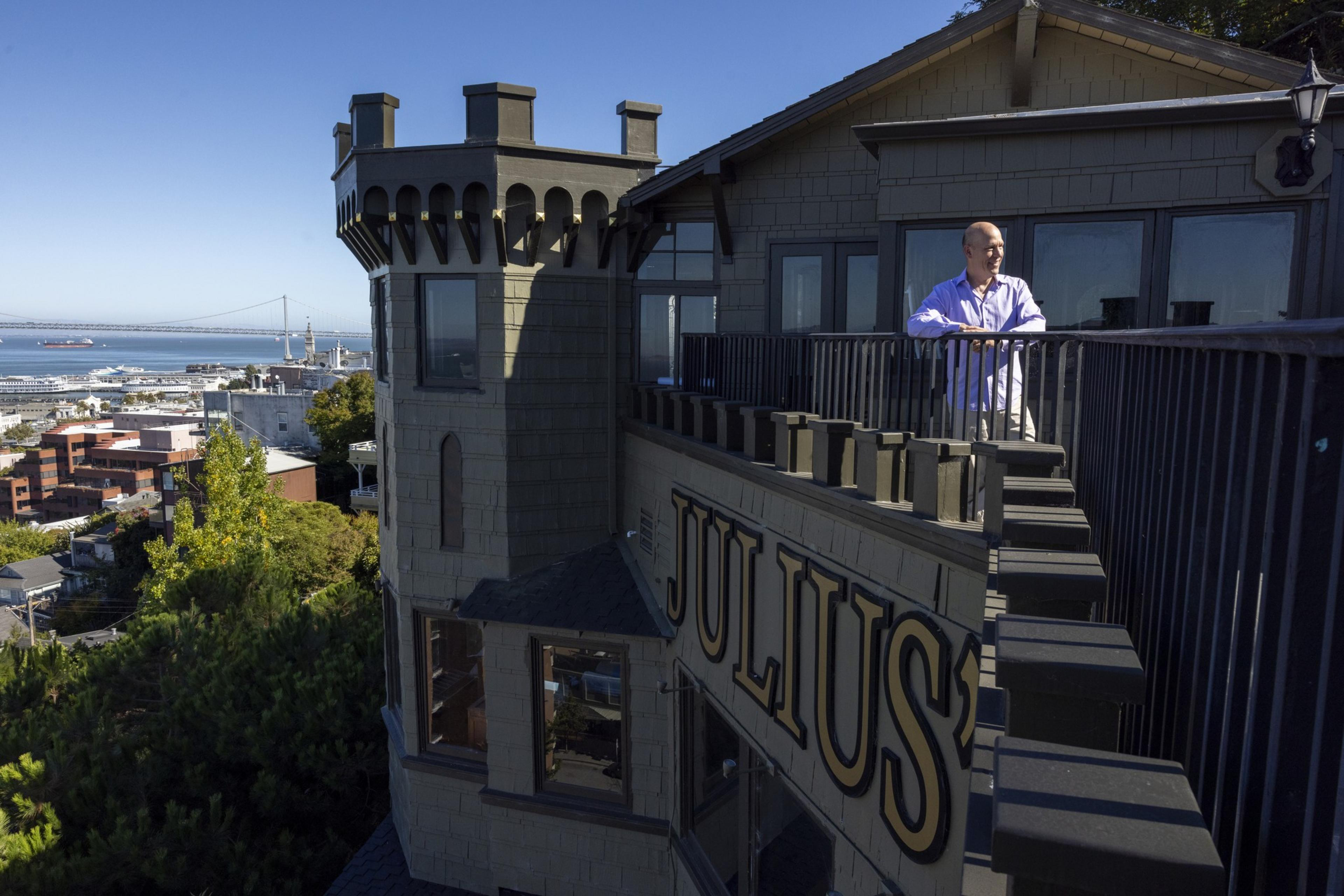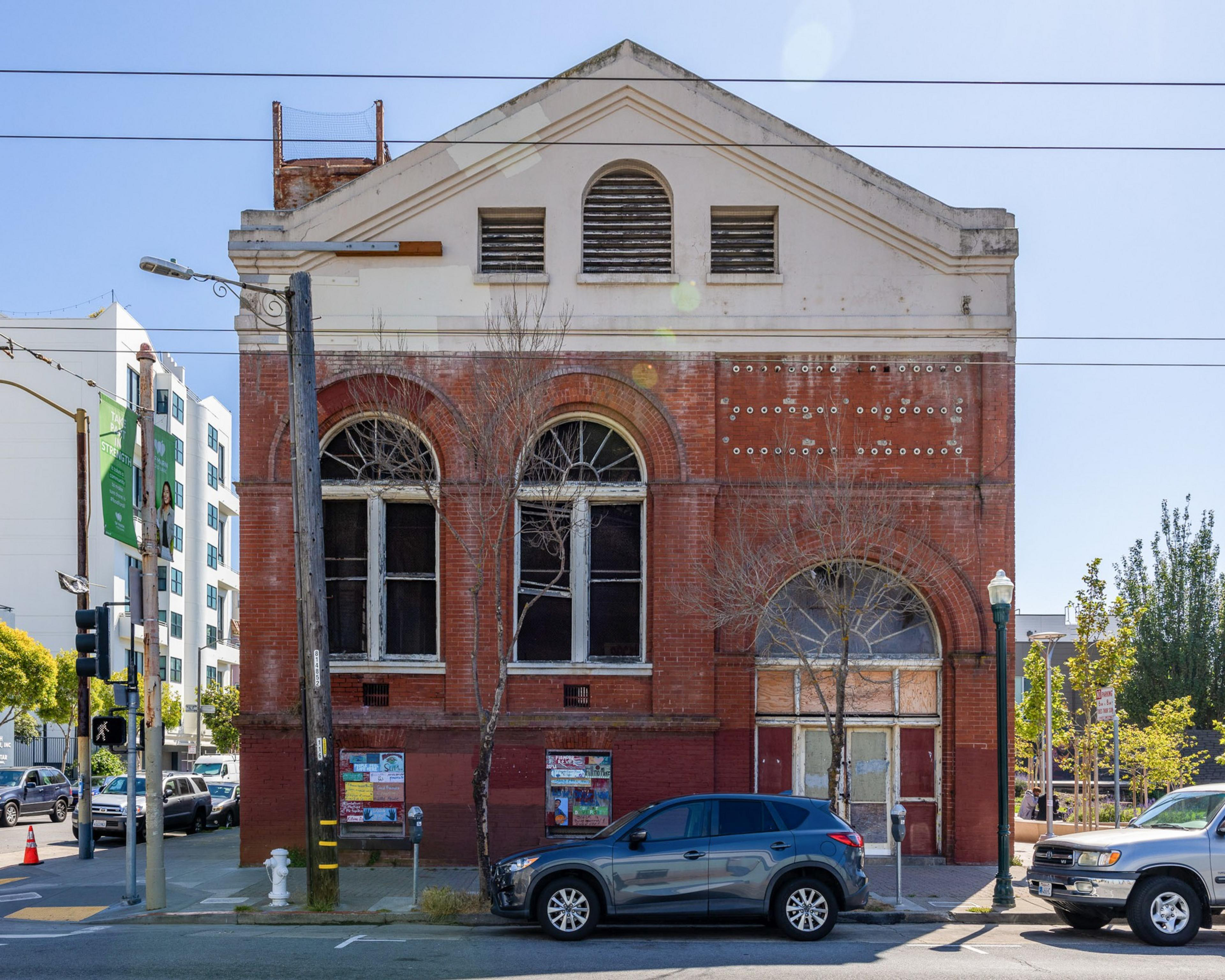All Paul Scott needs is a chef.
The 59-year-old attorney owns Julius’ Castle, the three-story restaurant clinging to the side of Telegraph Hill that embodies old-time San Francisco: sourdough, stiff drinks, and stunning views. For 12 years, he’s been renovating the closed 102-year-old tourist attraction to make it once again a destination for celebrities, prom dates, and engagements. The only thing missing is culinary royalty to run the kitchen.
“It’s just been a challenge, but it’s going to be cool,” Scott said. “We’re very close now.”
When he acquired the landmark in 2012, he thought he’d have it up and running in time for the America’s Cup yachting competition the following year. But Scott is the first to admit that the phrase “It’ll open by year’s end” has become a refrain around the castle since then. He has faced more construction and legal obstacles than the average restaurateur.

It would be a lot even for a veteran of the culinary trade. But Scott’s only restaurant experience was working as a busboy at 14. Still — unlikely as it seems — the former attorney with the U.S. Department of Justice, who now represents whistleblowers in private practice, may be on the cusp of actually reopening the place.
He just needs that chef.
Scott says he’s looking for someone who can offer continuity and pay homage to the place’s past, with all of the modern flourishes needed to succeed in San Francisco.
“Right now we’re interviewing for the king or the queen of the castle,” the longtime hill dweller said, adding that he’s accepting applications. “We’ve definitely got some good people interested.”
The hire is the last major hurdle in what has been an uphill obstacle course to bring back a bit of old city life.


‘Murky, strange buildings’
Somewhere between an It’s-It and the Golden Gate Bridge, Julius’ Castle is one of the seven wonders of San Francisco. Once again welcoming diners under its crenelated towers would be a win for a city that’s been leaning on its past to improve a reputation battered by the economic fallout of the pandemic.
San Francisco Heritage president and CEO Woody LaBounty is optimistic that it can come back, even if he doesn’t know quite how.
“I love the kind of murky, strange buildings that are a little bit associated with nightlife, entertainment, and all that — and Julius’ Castle has that in spades,” he said. “You can’t beat the location.”
Julius’ Castle opened in either 1922 — as the plaque on the facade says — or 1923 — as city records indicate. (Scott wonders if, in true SF fashion, it was built first and permitted later.) It was the vision of restaurant counterman Julius Roz, who emigrated from Turin, Italy, to San Francisco in 1898.
The whimsical building, designed by Italian architect and illustrator Luigi Mastropasqua, combines elements of the Gothic Revival and the Arts and Crafts styles that some historians, including LaBounty, attribute to the Telegraph Hill Observatory, a wooden castle built in 1882 where the Coit Tower parking lot is today.

It didn’t take long for Julius’ Castle to earn a reputation. In 1924, federal Prohibition agents seized a “large quantity of liquors,” causing “furor” from the “well-dressed” crowd inside. Roz and another man were arrested, according to a news report. (A former manager said the castle was primarily a gambling place that dabbled in restaurant service for a couple of hours at night.)
Business must have been good, because Roz expanded the castle in 1928. He became an icon himself: driving a Chrysler Imperial with two collies in the rumble seat and playing host to movie stars like Douglas Fairbanks, Lon Chaney, Ginger Rogers, and Fred Astaire. The castle even lured fictional celebrities: Dashiell Hammett’s hardboiled detective Sam Spade visits the place with his secretary Effie Perine in the 1932 short story “A Man Called Spade.”
After Roz died in the 1940s, the castle passed through a handful of owners and underwent several renovations. It became a place where mayors held meetings in the corner tower and tourists enjoyed sweeping views of the bay … and glimpses of celebrities. Sean Connery, Robert Redford, and the cast of “Star Wars” visited. Arnold Schwarzenegger, it’s said, once arm-wrestled three servers simultaneously — and won.
Mayor Emeritus Art Agnos said he doesn’t remember the mayor’s room so much as the Sunday dinners with his family.
“It is the quintessential historic San Francisco restaurant,” Agnos said. “I occasionally would take people in for a political meeting, but really it was for us, my family.”

‘Make it beautiful. Ignore the rules.’
By the time Scott acquired Julius’ Castle in a 2012 bankruptcy sale, it had been closed for five years. He beat out a competing bidder who’d planned to turn it into residences.
“I just remember thinking about it and just feeling sad at that idea,” he said. “I run into so many people that had their first date here, their prom, or some other special occasion.”
So a restaurant it would continue to be. That meant bringing the building up to code and handling an incredible amount of deferred maintenance. He’s made neat finds along the way — such as a cavity under the barroom floor that likely hid illegal hooch — but his biggest discoveries were rot and rust.
Years of rehabilitation ensued: undoing illegal construction, respecting historical preservation code, navigating permits, navigating permit appeals, modifying the building to accommodate everything from wheelchairs to landslides, constantly putting out both metaphorical fires as well as fires set by squatters.
And then there were the lawsuits. And then there was the pandemic. And he still has to find a damn chef.
Scott finds working on the project, often with help from his three grown children, to be a nice break from writing legal briefs. His enthusiasm almost makes you forget that, for more than a decade, he’s been pouring money into this place. Lots of money. How much? He won’t say.
“It hasn’t really been a project that had really any sort of financial sense,” Scott admitted. “At some point, it needs to pencil out at some level.”
Nonetheless, he’s forging on, spinning up the business. He has an acting general manager and an IT professional on staff. A beverage director is lined up. The kitchen plans should be completed in a few months. And in that time, he’d like to find that one essential, missing element: a premier chef.

Beyond drawing inspiration from the restaurant’s hundred-year run, Scott is influenced to a degree by Alice Waters, with whom he met and discussed the castle’s future at her Berkeley restaurant, Chez Panisse.
“She pulled me in close and whispered in my ear, ‘Make it beautiful. Ignore the rules. Do what’s right. Take care of the dishwasher,’” he said. “It was like having some Yoda-like spirit giving me wisdom.”
Heeding Waters’ advice, Scott wants the restaurant to use locally produced eco-friendly goods and, given the location, seafood from local fishermen. A neighbor is helping him seed a garden above the new retaining wall.
On the roof deck, Scott stands at the wooden parapet, looking out at the ships silently crossing a bay that has a few more bridges than it did when the castle was built. He sees Julius’ Castle as one more bridge, a different kind of bridge.
“Now’s the time when San Francisco could definitely use a win,” Scott said. “Reviving an old-time tradition — a special one — will help to do that.”
As soon as, you know, he gets a chef in here.

